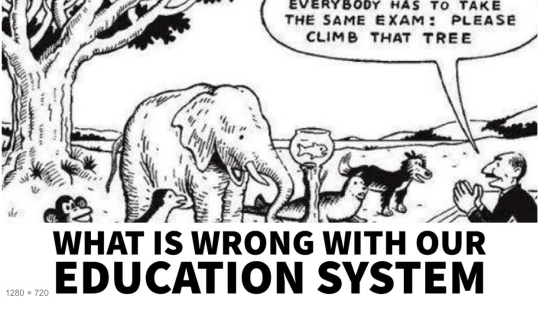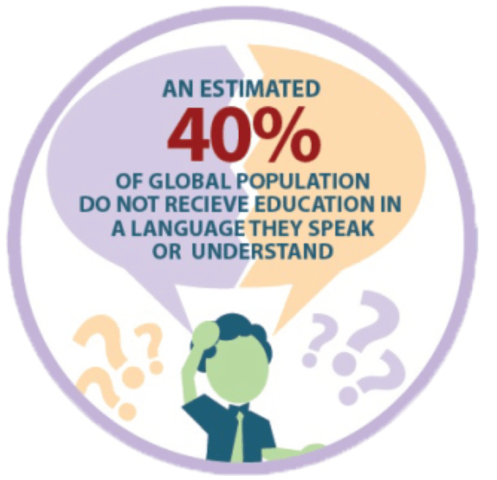How is the Latino culture the fasting growing minority group, yet still underrepresented, and marginalized within our educational system?

Below is an article that seeks first-hand accounts of Latino students, and their struggles as minority students in the US. From reading the five different student accounts, one can see a pattern of negative consequences that comes with being a Latino student in our system.

Some of the main problems that the students say negatively effected their education were:
Being Thrown into the System:
How can we expect that children of so many different backgrounds and cultures all require the same learning needs? Furthermore, how can we place students of different native languages in ELL classes and expect that they will achieve the same as students who were born speaking English? It seems as if Latino students are more often than not, placed into a system that is working against them by failing to acknowledge and cater to their specific needs. This can end up negatively effecting a student educations in the long run, and in turn, their future success.
One of the interviewees from the article states that, Latino students were really just “thrown into the system”, and goes on to say that he wished that schools would have done a better job at integrating diverse students into the classrooms instead of them being seen as, “‘that new kid who can’t really speak your language” (Bauman, 1). Schools often fail to recognize the outside hardships that come into play with culturally diverse student and their schooling, overlooking them and pushing these problems aside.
Schools need to prioritize making Latino students, and students of other minority cultures in general, feel comfortable, accepted, and recognized in the classroom. If teachers explore better ways to integrate new, diverse ideas and viewpoints into their classes, this may possibly give way to positive academic growth for Latinos specifically.
Language Barriers:
Probably one of the biggest issues that Latino students face in school is the English / Spanish language barrier. These students are placed in normal ELL classrooms, and expected to preform at the same level. It seems pretty obvious that it is irrational to expect non-ELL students to be able to comprehend the material in the same depth, although for some reason, schools are still questioning the lower academic statistics throughout this group. One student points

out that he struggled with communicating with other students, which made it difficult for him to succeed in school, or get the help he needed. The student, Oscar Mancilla, states that, “Learning the language, and not being able to talk or con
nect with others” had a big impact on his schooling experience (Bauman, 2). With the growing number of diverse students within our classrooms, teachers must account for the extra time and resources these students may need in their lesson planning. Instead of holding students to unreasonable learning standards, schools need to take time and become more involved in the figuring out the needs of their culturally diverse students.
Teacher Bias:
Diverse students are a product of various situations, backgrounds, and home-lives that some teachers may fail to consider. Each students, regardless of their culture, has different issues they may be facing outside of school, but all of those problems are out of their hands. When dealing with a student who may be struggling, or having problems in school, it is easy for a teacher to assume the worst, and write them off as a bad student. However, many factors go in to a students behavior inside the classroom, and it is a teachers role to look past those behaviors, and dig deeper to find the meaning, and a solution. With Latino students specifically in this case, teacher biases could likely play a roll on the overall lower school achievement numbers, and could be a result of teacher biases, and a failure to understand the students situation.
In the journal Empowering Latino Parents to Transform the Education for their Children, the authors analyze the effects that teacher biases have on Latino students, and their schooling experience. The authors state that, “Smith (2008) posited that research on this topic has to refuse an assimilationist perspective that has historically argued that low school and college achievement of Latinos are based on the students’ inability to accept the values, morals, and ethics of American cul- ture. Differences from the mainstream were construed as a deficit, and under this rubric, Latino parents were labeled “uncaring” or “uninvolved” in the formation of educational aspirations of their children” (655). If teachers view these differences as a “deficit”, as the author states, and place stereotypical name-tags on students and their families, there can be serious consequences for the students education and future.
When teachers assume biases instead of taking the time to read more into the student’s needs, that student does not get help, and can fall even more behind in school. This makes it harder and harder for the student to succeed, especially without the teacher on their side. For example, Latino students who are still learning, and may not speak English as fluently, might need some extra time and help from their teachers with school work. It is a teachers job to provide each student, regardless of culture or race, with the resources and help that they need to succeed.
Sadly, with several odds working against them within our education system, Latino students have struggled with issues, like these discussed, that have negatively effected their education as whole. It seem as though we fail to consider the difficulties that students face when being introduced into a very new, different learning environment, and as teachers, it is our job to provide students with time, resources and opportunities that will help them flourish.